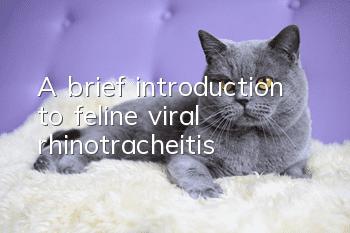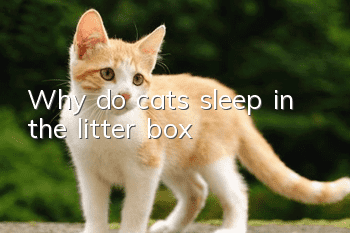A brief introduction to feline viral rhinotracheitis

Persian cat
Symptoms of feline viral rhinotracheitis
The main areas where the virus grows and invades are the nose, sinuses, eyes, palate, tongue, throat, tonsils and upper trachea. Cats will develop severe sneezing symptoms 1 to 3 days after being infected, and then gradually become lethargic, have a fever, have a severe loss of appetite, and even stop eating. The nose will initially run clear, like when a person has a cold. The same, and then gradually the nasal discharge becomes thicker and thicker like snot; tears flow, and the conjunctiva (i.e., the white of the eye) becomes red and swollen, so swollen that the eyes cannot be opened. Some cats may also develop corneal ulcers; some cats may develop corneal ulcers. Drooling and ulcers appear in the mouth; as the disease progresses, cough and even pneumonia symptoms may occur. These symptoms usually last 7 to 14 days. The severity of the symptoms is usually related to the number of viruses infecting the cat. The greater the number, the more obvious and severe the symptoms are. In addition, it is also related to the following factors: the age of the cat, the age of the cat, and the severity of the symptoms. Younger or older cats are more susceptible to virus attacks, and the more serious their condition will be; nutrition, the better the nutrition, the better the resistance, and the stronger the ability to fight the virus; stress, the resistance of cats in a stressed state The strength of the cat will decrease, so the sick cat must be given a quiet and comfortable environment; if it is complicated by other diseases, when the cat suffers from other diseases at the same time, its resistance to the virus will be relatively weak, so the symptoms will be more serious.
Prevention and treatment of feline viral rhinotracheitis
There is no specific drug to treat feline viral rhinotracheitis, so the mortality rate of cats suffering from this disease is very high, but some cats have recovered through treatment. The current treatment principles are mainly symptomatic treatment to prevent secondary infection and some therapies to increase resistance. It is very important to take good care of the cat during the treatment process. Keep the cat’s eyes and nose clean, provide the cat with nutritious food and clean drinking water. Even if the cat does not take the initiative to eat or drink, you must find a way to feed it to ensure that It has enough physical strength to fight the virus. The place where the cat lives must be well ventilated and disinfected frequently. If the weather is cold, the cat must be kept warm.
But as the saying goes, "prevention is better than cure." Feline viral rhinotracheitis can be prevented by injecting the feline triple vaccine, which is also the safest and most effective method to prevent the disease. In addition, the place where cats live must have a good ventilation environment. Utensils used by cats must be disinfected regularly. If the place is not large enough, try not to keep too many cats. When suspected sick cats are found, they must be isolated and disinfected in time. , to prevent contact transmission, and cats should be fed nutritious food to enhance their ability to resist viruses.
How is feline viral rhinotracheitis transmitted?
1. Viruses are directly related to catsContact-to-contact transmission is the main mode of transmission of feline viral rhinotracheitis. The virus is excreted through secretions from the nose, eyes, and mouth. Sick cats and healthy cats are infected through the respiratory tract through direct nose-to-nose contact and inhalation of virus-containing droplets. This type of transmission is most common in cat shelters, breeding farms, or places where there are several cats in the home, so if one cat in these places gets the disease, the other cats are likely to be affected as well. Well, this is the case with the cat of the eldest sister mentioned at the beginning.
2. Indirect transmission. Feline viral rhinotracheitis virus can contaminate the surrounding environment such as furniture, water dishes, food dishes, cat litter dishes, cages and walls when cats sneeze or cough or saliva. When other healthy cats When you come into contact with these virus-contaminated things, you will be infected by the virus and become ill. The virus can also be transmitted to other cats through people and their clothes. Therefore, you must be sure to take your cat to the animal hospital or beauty shop when taking it to see a doctor. Be careful that cats are indirectly infected in these places. In addition, owners must change their clothes and disinfect them immediately after returning home from these places or pet markets before coming into contact with cats at home.
3. Maternal transmission: Feline viral rhinotracheitis virus can be transmitted from female cats to kittens through the placenta, so cats with this disease cannot become pregnant. (Picture source: Huagai)
- How to trim Chinchilla cat nails?
- Why does the little kitten keep meowing?
- How to train a cat to catch mice? Corrective training for cats!
- What preparations need to be made before raising a cat? A must-read for novice cat owners!
- Can kittens eat ham?
- How long do Burmese cats generally live?
- What medicine is best for external deworming of cats?
- What to do if cat ringworm grows on its paws
- Is the Turkish Van cat easy to raise? Turkish Van cat pictures | price |
- How much weight does a Ragdoll cat normally weigh in three months?



